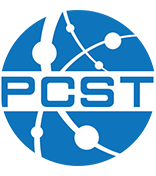Using narratives and storytelling based on famous and historical characters to engage the public with science
Author: Katie Banister – University of Aberdeen, United Kingdom
Co-authors:
- Magaly Acaves Martin – University of Aberdeen
- Gordon Fernie – University of Aberdeen
- Beatriz Goulao – University of Aberdeen
- Clare Robertson – University of Aberdeen
- Samantha Wileman – University of Aberdeen
Storytelling is a creative and appealing tool to communicate science to the public. Research suggests narratives are easier to comprehend and more engaging than traditional scientific communication. The aim of our public engagement group is to use storytelling and narratives to develop activities communicating concepts related to Health Services Research.
We developed storytelling activities to communicate two of our research areas: clinical trials and evidence synthesis. We build stories centred on key characters, and the concepts we want to communicate, through brainstorming sessions. We adapt our activities for the audience and pilot activities as a group. We use props and visual and sound cues to enhance the activities. We evaluate and adapt our activities using engaging questions for our target audience – about the key message and their enjoyment. We used these methods to develop activities for local science festivals and at local schools, engaging with over 2,000 people.
Our activities all involved a narrative and historical or fictional characters. Scottish naval doctor James Lind who ran the first clinical trial for scurvy is one historical character. We re-enacted the scurvy trial with primary school pupils, including role play and singing. Science festival-goers approached our team of sailors for a clinical trial themed candy tasting which was our opener for discussions about health research. To explain evidence synthesis, we used Sherlock Holmes and a treasure hunt with school children and families. Using props, noises and visual cues creates curiosity in the public that can develop into a conversation between researchers and citizens.
Our visual presentation will showcase our methods of catering to different audiences and highlight our learning points. We have found this a successful first step in engaging the public in our research.
On behalf of HSRU public engagement group
The author has not yet submitted a copy of the full paper.
Presentation type: Visual presentation
Theme: Time
